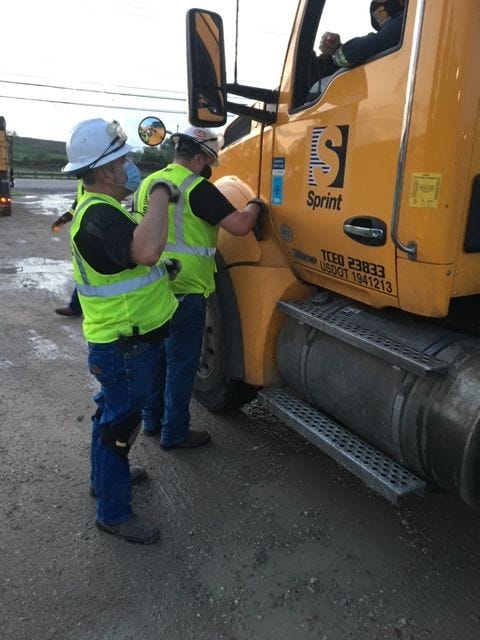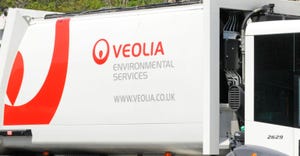Sprint Waste’s Tool Box to Stay on Top of Safety

Solid waste refuse and recyclable material collection ranked as the fifth-deadliest industry in the U.S. in 2018. More recently, while SWANA observed a decrease in fatal incidents early in 2020, it noted a rapid increase in tragic events beginning in mid-March, coinciding with the onset of the COVID-19 pandemic in the U.S.
Going back further and looking at the long-term pattern, the findings are similar: Safety has been a problem, and waste operations are arming themselves against it.
Individually, operations are implementing robust safety programs centered around education, and they are investing heavily in safety equipment and safety technologies. Industrywide, there have been national campaigns like Slow Down to Get Around. But increasingly, waste operations are adopting the mantra that safety is not just about a program or material assets — it’s a culture.

Sprint Waste Services is among those believers. The company is especially focused on its drivers, who collectively clocked 19 million miles last year.
“Safety is not a tagline, it’s the foundation of who we are,” says Dave Nelson, president of Sprint Waste Services. “We realize we’re in a dangerous business. We have 350 drivers on the road every day, surrounded by distracted drivers in challenging traffic situations.”
While Sprint Waste has policies, technology, and employee training, it also has a far-reaching safety culture. Nelson says it starts with enthusiastic leadership from the company’s owners, himself, and the leadership team.
The company’s safety department is led by a former Texas state trooper who is supported by safety managers. Nelson says the vice president of operations is the company’s most effective safety advocate, “making sure all of our operational employees buy into our safety expectations, reinforcing this through praise and holding people accountable.”
Financial incentives have been a motivator. At least 50% of operations managers’ bonuses are dependent on achieving the company’s safety goals.
Drivers earn monetary awards as well. One example is an activity that involves hidden red tags. Managers go out in the middle of the night and place tags on trucks, and drivers are expected to find the tags during their pre-trip inspection the next morning.
“If a red tag is missed, it tells us we need to work harder on pre-trip inspection training and observations at that location, and the driver may need some additional training as well,” says Nelson.
There are other measures to ensure that employees stay on their game, such as a safety calendar noting specific activities that must take place, as well as assigned owners and deadlines. Other activities include mock truck inspections, employee-led safety meetings, and supervisor ride-alongs.
Technology is coupled with culture to bolster safety outcomes. For example, Sprint Waste mounted dash cameras on drivers’ windshields. The devices capture video footage triggered when a driver makes a harsh turn, hits the brakes hard, or rolls through a stop sign. An audio feature alerts the driver when one of these events has occurred. The videos captured by the camera serve as training tools.
“We’ve found videos of our own drivers in our local markets doing our type of work to be much more effective than preproduced training videos,” says Nelson. “Also, all the drivers know they have cameras in their trucks that are measuring speed, hard stops, and fast turns, with the capability to videotape an accident. This gets them to drive more defensively and safely.”
Historically, drivers are not at fault in most accidents. Nonetheless, prior to installing the system, it was the driver’s word versus that of the other party at the scene.
“That didn’t always go in our favor,” says Nelson.
The use of camera footage helped exonerate drivers in 52% of accidents in 2019. Managers are able send videos to the driver’s phone at the accident scene, which the driver can show to law enforcement officers.
Nelson says the technology has saved Sprint Waste from lawsuits and unnecessary insurance claims. He credits the system as being key to savings of $500,000 in the company’s last insurance renewal.
Besides the cameras and audio alerts, trucks are equipped with such safety technologies as antilock brakes and forward collision mitigation. The goal of these combined technologies and other efforts is to minimize human error as much as possible.
“We share with employees our safety expectations, and we also share our safety record and awards,” says Nelson.
One of Sprint Waste’s most recent accolades came from tech company Samsara, which chose Sprint to receive its Top Fleet Award in the Safest Fleet category.
The award program recognizes Samsara customers that invest in its Internet of Things products, such as the dash cams that Sprint Waste uses, and vehicle gateways, the hardware that connects to the cameras to transmit the data, among various Samsara hardware and software products.
“This award gives us the opportunity to highlight innovative organizations such as Sprint Waste that effectively tackle industry challenges and generate outsized impact using technologies like the Samsara platform,” says Robert Stobaugh, vice president of customer success at Samsara. “Each organization we recognize is a leader in their respective industry. By learning about their use cases — both the challenges and successes they’ve seen —Samsara benefits, in that we can continue to grow our technology solutions.”
Sprint Waste’s combined internal efforts have generated several positive outcomes:
A Total Recordable Incident Rate of 0.20 in 2019, according to the Occupational Safety and Health Administration.
An Experience Modification Rate of 0.64 in 2019, meaning worker’s comp loss is 36% below the industry average, according to the National Council on Compensation Insurance.
Compliance, Safety, Accountability (CSA) scores among the best in its peer group for June 2020: unsafe driving 4%; vehicle maintenance 27%; and most other measured driving outcomes 0%, according to the Federal Motor Carriers Safety Administration.
Nelson targets each of these metrics as they pertain to all employees connected to fleet safety.
“Because we are primarily a trucking company, we focus on metrics that are associated with trucking safety as well as the safety of our maintenance employees who work with tools and heavy equipment that can be dangerous,” Nelson says. “And we carefully monitor our CSA scores and study every near miss or incident so we can learn from them and do everything we can to prevent them from happening in the future.”
About the Author(s)
You May Also Like




